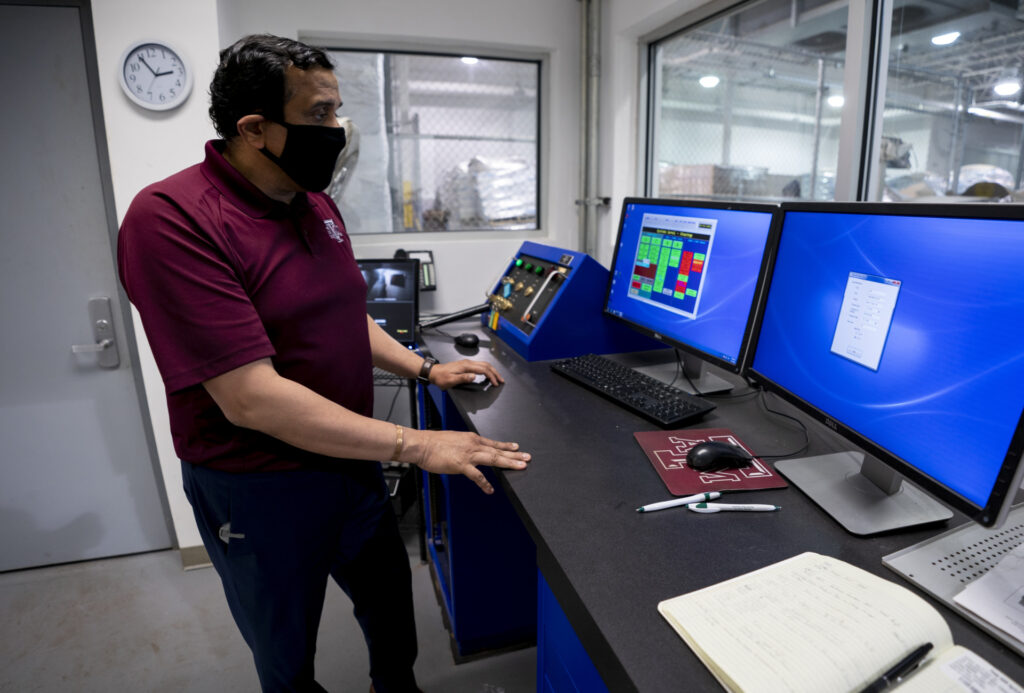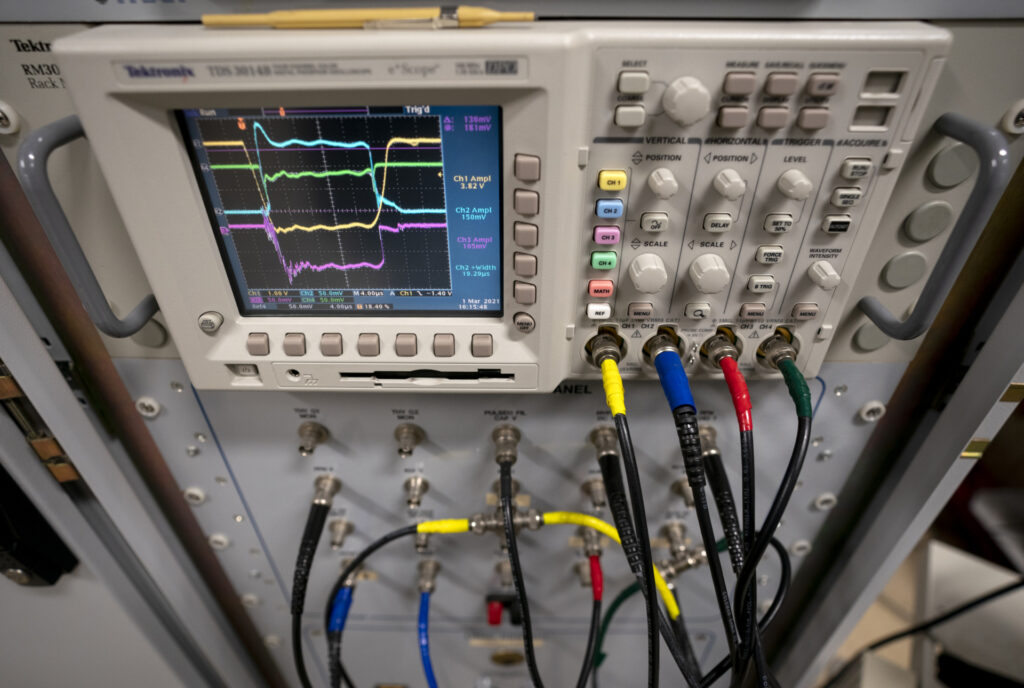Newswise — The National Center for Electron Beam Research at Texas A&M University in College Station is collaborating with the U.S. Department of Energy to reduce the risk of nuclear and radiological terrorism.
The center is the leading academic and research facility in the world for the development and commercialization of electron beam, or eBeam, technologies, said Suresh Pillai, Ph.D., center director and Texas A&M AgriLife Research professor and associate head of the Department of Food Science and Technology in Texas A&M’s College of Agriculture and Life Sciences.
Nuclear and radiological risk reduction is only one of the many ways in which the center is making the world a little safer through the use of eBeam technology.
What is eBeam technology?

The technology is a high-speed method of sterilization in which energy from electrons is used to neutralize or kill microorganisms, while protecting material properties, preventing polymer degradation and maintaining the integrity of sterile seals.
Pillai said a primary objective of eBeam research is to help reduce the commercial use high-activity radioactive sources used for sterilization, including cobalt-60 and cesium-137.
“Although the isotope irradiation technologies have fed and saved millions if not billions of lives by their use in medicine and agriculture, radioactive materials can pose a serious nuclear security risk,” Pillai said.
He said transitioning to alternative technologies like electron beam technology helps to permanently reduce the risk of radiological terrorism by keeping those with bad intentions from acquiring these radioactive materials.
Addressing nuclear and radiological terrorism
In 2014, the center was named an International Atomic Energy Agency collaborating center for eBeam use in food, health and environmental applications. The National Nuclear Security Administration’s Office of Radiological Security, or ORS, uses the Texas A&M eBeam Center as a center of excellence for domestic and international partners interested in transitioning to electron beam for their applications. The office also sends their partners to Texas A&M to gain hands-on experience with eBeam technology.

“The collaboration between the Office of Radiological Security and the eBeam center is in direct support of the ORS mission to enhance U.S. and global security by preventing high-activity radioactive materials from being used in acts of terrorism,” said Corey Hinderstein, deputy administrator, Defense Nuclear Nonproliferation at the National Nuclear Security Administration.
“One of our primary strategies is to reduce the global reliance on high-activity radioactive sources by promoting the adoption and development of non-radioisotopic alternative technologies,” Hinderstein said. “With information from the eBeam center and the National Nuclear Security Administration’s global outreach, these technologies are increasingly replacing cesium and cobalt devices.”
Pillai said even with the existence and recent advancements of eBeam and other technologies such as X-ray irradiation that do not use radioactive materials, many end users and stakeholders simply do not have enough information to consider changing to eBeam over traditional isotope technology.
However, he said, the Office of Radiological Security is addressing these information gaps in part by funding collaborative projects with AgriLife Research and sharing data globally.
Further collaboration
AgriLife Research partners with the Pacific Northwest National Laboratory, PNNL, in executing the ORS projects.
“The Texas A&M collaboration with Pacific Northwest National Laboratory has resulted in numerous projects that have addressed the information barrier that the user community faces in considering alternative technologies,” said PNNL scientist Jennifer Elster, an expert in radiological security. “In addition, Texas A&M is a key partner in outreach activities that include bilateral discussion with international partners as well as large regional workshops on eBeam.”
The eBeam center provides a unique location for such activities, Pillai said.
“We are working with our partners to address both the information barrier and lack of resources related to the operation of alternative technologies,” he said.
Additional uses for alternative technologies
Pillai said both small and large industry stakeholders have a growing need for sterilization or pasteurization services. These stakeholders include those looking for techniques for sterilizing insects, blood irradiation services, agricultural producers, pet food manufacturers, laboratory animal diet suppliers, spice importers and exporters, and ingredient suppliers.

He said the scarcity of cobalt-60, along with the increasing cost and loss of access to the radioactive material, has jeopardized the sterilization capacity to meet commercial needs worldwide — making it even more imperative to develop newer sterilization technologies.
“This has caused some serious impediments for pasteurization services that currently use radioactive sources such as cobalt-60,” Pillai said. “Unfortunately, to this point the availability of eBeam and X-ray technology-based services has not kept up with the loss of cobalt irradiation capacity. Our research also involves addressing how to lower those barriers to these alternative technologies by decreasing the cost of its manufacturing and distribution.”
He said product sterilization is vital to the survivability of the stakeholders’ operations, which is another reason the U.S. must enhance the technology to innovate and manufacture more eBeam and X-ray sterilization equipment.
Pillai said research and commercialization efforts at the center have led to new directions in environmental treatment and remediation technologies, phytosanitary applications, sterilization, pasteurization, vaccine development, and food safety and security. They have also been beneficial in providing new functionality to polymers and advanced materials for business and commercial use.
He said further efforts at the center might include expanding the technology for use in:
— Sterile insect techniques for pest management.
— Crop mutation and improvement.
— Tissue sterilization.
— Virus inactivation.
— Polymer upcycling.
“This is also in keeping with the AgriLife Research mission to provide comprehensive agricultural and life sciences knowledge and services to restore connections among people, agriculture, food, science and the economy,” Pillai said. “We want to improve the quality of life around the world, specifically by harnessing electrons via electron beam and X-ray technologies to help safely clean, heal, feed and create a safer world.”
-30-